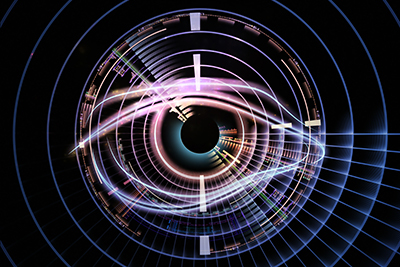
Machine learning and data analyzation by computers have been prevalent since the late 1990s. For many people, this brings to mind large computer processing units carrying out an unfathomable number of calculations per second.
With new technology being created on a seemingly daily basis, we’re now at the point where microcontrollers can be used instead of massive, room-sized CPUs. Below, we’re going to discuss what embedded vision is, how microcontrollers are revolutionizing the field, as well as the best microcontrollers available today.
What is Embedded Vision?
Embedded vision is a monitoring unit, usually consisting of a camera and a CPU, that “sees” information in the real world and analyzes it based on given criteria for a specific purpose. An example of embedded vision is a series of cameras planted in a major city that monitor streets and interpret the data to determine where parking spots are available.
What is a Microcontroller?
A microcontroller is a single chip that includes a processing unit, some small amount of memory, and inputs and outputs to interact with computer peripherals. These small computers are often used to interact with larger systems or other microcontrollers, but many are robust enough to perform useful functions on their own, including for use in embedded vision.
What Microcontrollers are Available?
There are many microcontrollers available, all with different specs that make them optimal for use in specific areas. Below, we're discussing four of our favorites, along with some pros and cons to help you decide which might be right for your project.
1) Nvidia Jetson TX1 - this is what we consider the powerhouse of microcontrollers. It’s a bit more expensive than other options, but it has a robust community behind it and impressive specs that make it ideal for use in embedded vision.
Pros
-Impressive computing (1 TeraFlop)
-Low power consumption (10W)
-64-bit quad-core processor
-Onboard WiFi and Bluetooth
Cons
-Expensive
2) Raspberry Pi 3 (Model B) - Raspberry Pi has long been an affordable option for microcontrollers, and the performance and support of the Pi 3 are awe-inspiring.
Pros
-1.2 GHz quad-core processor
-Very affordable
-Robust community of developers
-Onboard WiFi and Bluetooth
Cons
-Lower performance than TX1
3) Nvidia Jetson TK1 - this Jetson model, which came before the TX1, still has impressive computing power and a great eco-system of developers behind it.
Pros
-Very affordable
-High computing power (300 GigaFlops)
-Robust community of developers
Cons
-No onboard WiFi or Bluetooth
-Less performance than TX1
4) BeagleBoard (BeagleBone Black) - the BeagleBoard is an excellent option for embedded vision that requires additional hardware connection, and it still boasts impressive processing.
Pros
-Highly expandable with hardware
-Affordable
-High storage capacity
Cons
-GUI is subpar
-Lower performance than previous options
All of these computers are capable of impressive computing and will be great additions to your embedded vision project. Couple one of these with high-quality cameras designed for embedded vision with your microcontroller, and you’ve got yourself a recipe for success.
